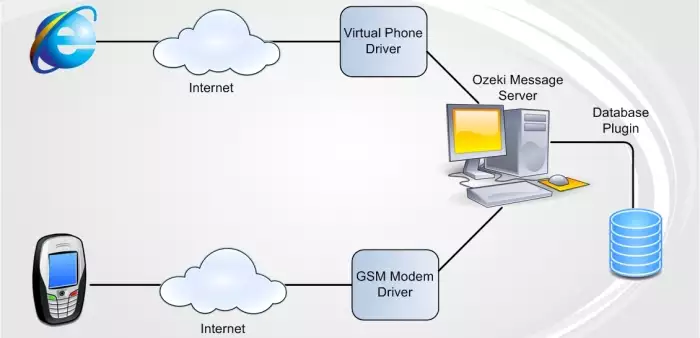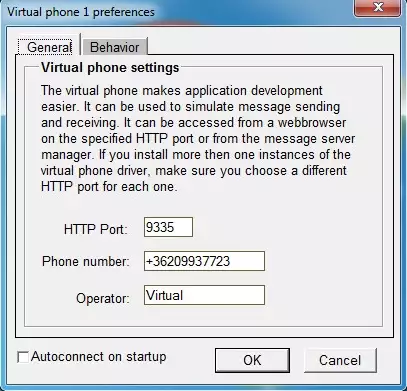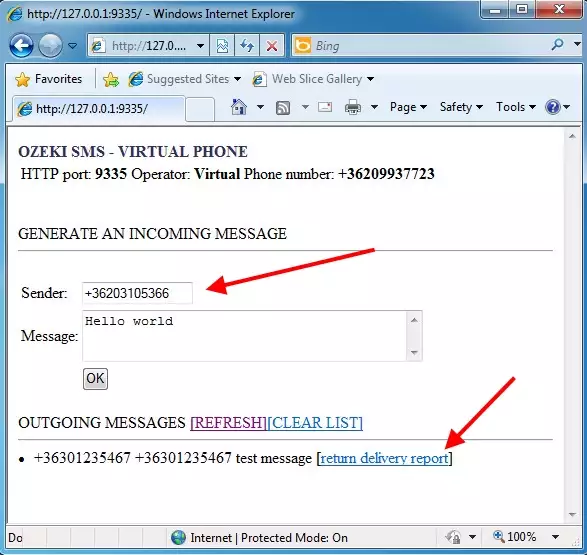Installing the virtual phone driver
The virtual phone is a tool developers can use to build applications. It simulates the presence of a GSM network (Figure 1). It can be used to imitate sending and receiving messages with Ozeki Message Server. This driver was introduced, because it is hard to develop and test applications if you have to send/receive SMS messages from a GSM handset and costs can be also reduced this way.

The Virtual phone driver can be installed like any other driver in the Server Manager application. It provides a user interface accessible through a web browser like Internet Explorer. The user interface becomes available after the driver is connected by opening the following URL: http://127.0.0.1:9335. The 127.0.0.1 IP address should be replaced by the server IP address and the 9335 port should match the port specified in the virtual phone driver preferences form (Figure 2). Note, that this port number should be different from the default port (9333), Ozeki Message Server is working on. 9335 is a good option.

To provide good simulation, the virtual phone driver makes it possible to set the average delay period between sending out messages. If you place a checkmark in the "Simulate message transmission failures" checkbox, it means that sending errors will be simulated for outgoing messages. Incoming messages can be simulated by opening the Drivers/ Virtual phone 1 / Testphone menu item. This option opens a form where the originator phone number and the message text can be entered (Figure 3).

